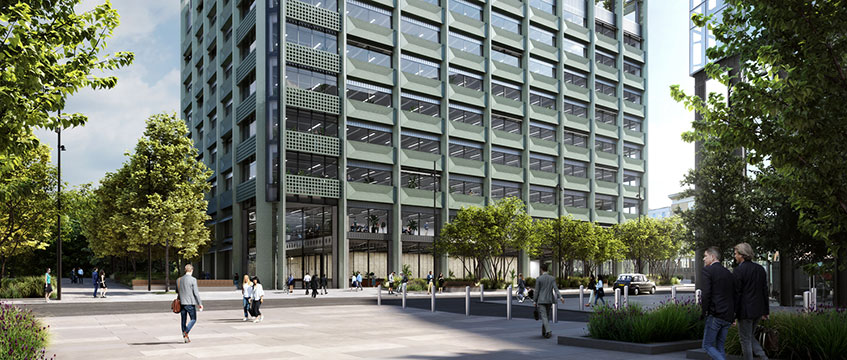The government’s plans to manage its £158bn UK-wide property portfolio are lacking ambition and are out-of-date, says a new report from the Public Accounts Committee.
The report warns that Cabinet Office plans for managing the government’s extensive property estate portfolio, which costs £22bn a year to maintain, are out of sync with current market conditions and lacking in ambition to reduce costs.
It also labels the Government Property Agency “handicapped” in achieving planned reforms by ageing IT systems and incomplete data on post-pandemic office usage, with the risk that taxpayers are locked into long-term, high-cost leases.
The GPA is responsible for all government offices and warehouses, although not all government offices have been transferred to it as originally intended. It as an objective to open at least 31 modern government office hubs across the United Kingdom, allowing for smaller offices to be closed.
However, the PAC said that the hubs plan – many of which have been funded through deals with Legal & General – may no longer be fit for purpose. It said that six of the 12 new hubs for HM Revenue & Customs had the department locked into 25-year unbreakable leases at higher than current market rents.
As a result it wants the Cabinet Office to set out in detail the benefits and costs of the programme, including valuation drops and how it will be adapted in light of the new estimates for post-pandemic office usage.
It is also calling on the Cabinet Office to update the PAC yearly on the rollout of the hubs programme, with updates including the lease term and next available break point for each GPA hub, the extent to which offices are being sublet, the current levels of vacant space and what plans government has to sublet this space in the short to medium term.
This summer, the Cabinet Office published a new government property strategy, with new targets for rationalising, improving and professionalising the estate. The strategy set out plans to generate £2bn by disposing of £1.5bn of property and cutting £500m from the estate’s operating costs.
The PAC said it was unclear how the £500m target has been arrived at or if it is ambitious enough, and is now calling on the Cabinet Office, by April next year, to set out how it intends to reach its disposal and cost saving targets with clear disposal targets for each portfolio and how it will ensure value for money in a fluctuating market.
“The Cabinet Office should write to us within six months splitting out operating costs of the government estate by expenditure type (including lease obligations) and also set out the current £500m planned savings for each area and what scope there is for additional saving,” said the PAC.
The Cabinet Office’s new property database, InSite, which has been repeatedly delayed, also comes in for a slamming, with the PAC saying it is now in a position where the procurement of the £1m computer system is hindering effective management of the government estate.
Sir Geoffrey Clifton-Brown, deputy chair of the PAC, said: “The plague of ageing, inadequate data systems strikes again, this time at the heart of government’s £158bn property estate. The whole plan for a network of government office hubs across the UK appears to be in some disarray, with radical shifts in office space use and rental values, but the Cabinet Office simply hasn’t got enough grip on the facts on the ground to adapt.”
He added: “HMRC itself is losing hard-won tax revenues to overpriced, unbreakable 25-year leases for six large office hubs, despite being warned of our concerns about this practice even before the covid pandemic. Government is clinging to the idea it can sublet surplus spaces which are now considerably higher than market rent. The PAC has already warned that just won’t wash.”
Click here to read the report in full.
To send feedback, e-mail samantha.mcclary@eg.co.uk or tweet @samanthamcclary or @EGPropertyNews











